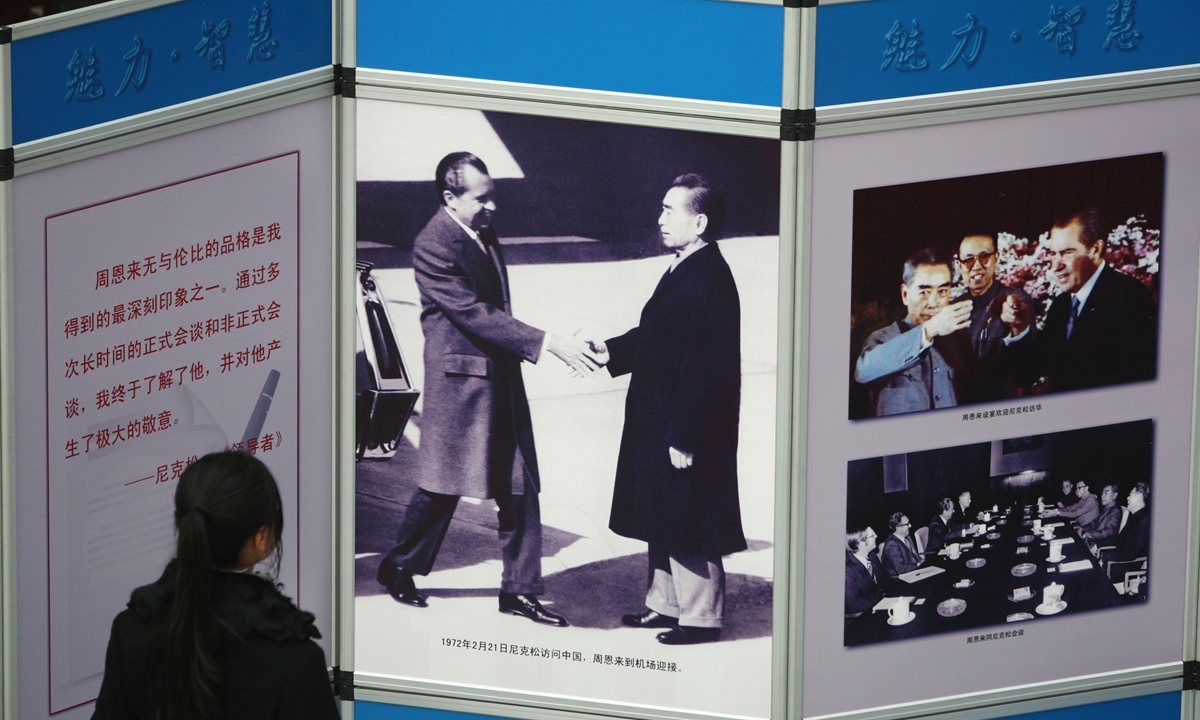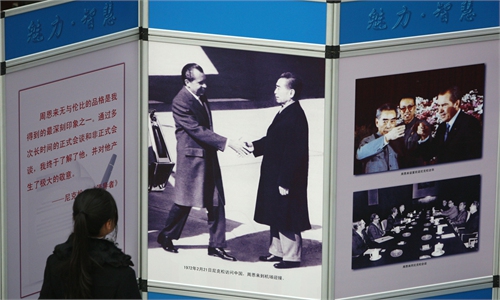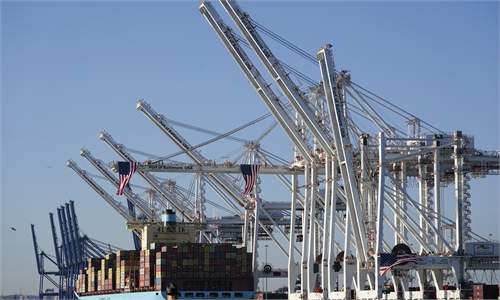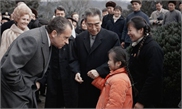
An exhibition on US President Richard Nixon's visit to China Photo: cnsphoto
Across the world, people in their fifties or older must have indelible memories of that shocking and historic week - February 22-28, 1972. The world with wide-opened eyes was following the visit of then US President Richard Nixon to China. During the visit, Nixon and Chinese leaders Mao Zedong and Zhou Enlai had "changed the world" forever by signing the first joint communique between China and the US.Younger Western generations in politics or diplomacy might be surprised by the whole process of this visit. The president of the world's top capitalist country paid an historic visit to a communist country, with which Western countries had fought in bloody battles for years. The two countries had no official diplomatic relations yet. Across China, posts of "Down with the American Imperialists" were visible. Both sides publicly expressed their differences, disputes, and disagreements.
At that time, television has entered its golden age in the US. American citizens witnessed President Nixon entering Chairman Mao's library and visiting the Great Wall of China. On top of that, in front of cameras, with smile, Nixon helped Zhou take off his coat, and enjoyed a sample of Chinese baijiu Moutai. The visit was seen as being successful, culminating in the first joint communique between the People's Republic of China and the United States.
There is no need to read history books to interpret how the visit has been viewed. Nixon himself summed his goals of this visit with simple sentences: We are here [in China] for American interests; our common interests have brought us here. That's very short but to the point.
Even after many years, we are still stunned at the courage the leaders of these two countries had to overcome all hostilities, differences, disputes, disagreements. After 50 years, bilateral trade between China and the US had reached $755.6 billion, and the two economies have become deeply integrated, with thousands of flights arriving and departing in the two countries prior to the COVID-19 pandemic. The common interests between the US and China are far more significant than the differences. Compared to 50 years, there is no reason whatsoever for political and diplomatic leaders to drive down bilateral relations between the two countries.
Every country goes through ups and downs, showing both their best and worst, but that should not impact their relations with neighboring countries. In the real world, no person or country can live in isolation. It is both the historic trend and common sense that communication makes the world much better and stronger.
The establishment of diplomatic ties between China and the US before they had formally recognized each other is a huge historic achievement for both sides. The documents and stories about the visit show the perfect understanding of history, far sights, and ultimate political realism. Reading these stories, the young generation of political and diplomatic leaders in all countries would be inspired.
On the eve of Nixon's visit to the Great Wall, there was heavy snow. Many people thought that they have to change the schedule. But, just in that evening, Zhou had organized thousands of people to clear the road of almost 70 kilometers from Nixon's hotel to the Great Wall. Next morning, it seems nothing happened from the American's perspective. All the events took place as previously planned. Although there was no snow on the road to the Great Wall, the trip still changed the lives of many people and left deep marks in history.
Many years later, a professor had a chance to meet Dr. Henry Kissinger and asked him a question: How many cars Nixon's entourage had? Kissinger said he had no idea. The professor told him the exact number and told Kissinger why he knew the number so accurately. He said, as an ordinary apprentice at the time, he was stopped on the way to work by Nixon's entourage and he watched and counted Nixon's motorcade.
After Nixon's visit, there was a boom in the number of students learning English. Then the young apprentice became a professor of English and traveled around the world. Inadvertently, such a visit had changed many people's lives and had changed the world.
In a picture, as he was standing on the Great Wall, President Nixon seemed to be in deep thinking, as if he was looking into history. The visit was successful for him and very shocking to the world. But more importantly, the greater result of the trip was the connection of two opposite sides.
The longer we look at this period of history, the more sincere the young generation would be in their admiration. And the sense of responsibility would also be clearer: People-to-people bonds cannot be cut off; friendship and exchange could bring more benefits and prosperity to the world.
The author is the deputy secretary general of the Center for One Belt One Road at the Chinese Academy of Social Sciences.



